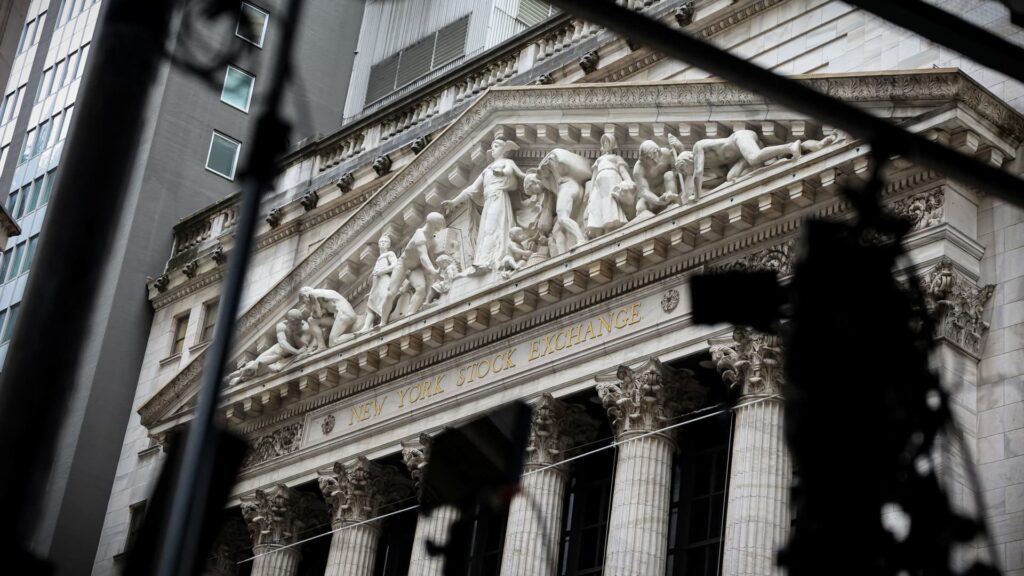Highlights;
- The S&P 500 had a strong month in August, gaining over 2%, but ended the week slightly lower after a decline on Friday, snapping its four-week winning streak.
- Nvidia’s earnings report sparked investor concerns over revenue misses, inventory levels, and customer concentration, leading to a 2% weekly and monthly decline for the stock, despite the Club maintaining a positive outlook.
- CrowdStrike delivered strong earnings results but faced pressure due to underwhelming revenue guidance, though the Club upgraded the stock to a buy rating, and it still ended the week higher despite Friday’s market drop.
- The broader market faces uncertainty ahead of the Fed’s September meeting, with inflation data showing persistent price pressures and September historically being a challenging month for stocks.
The stock market experienced a strong month, but it ended on a less-than-optimal note. The S&P 500 dropped slightly more than 0.6% on Friday, falling from its record high on Thursday. This decline pushed the index into the red for the week and ended its four-week winning streak. Despite this, the S&P 500 still managed to gain over 2% for the month of August, marking its fourth consecutive monthly increase. Investors may have chosen to lock in profits ahead of the long Labor Day weekend, especially after the market weathered the biggest earnings report of the quarter without major issues. This report came from Nvidia, which posted strong results and optimistic guidance on Wednesday evening. However, Wall Street scrutinized the details, leading to a 0.8% drop in Nvidia’s stock on Thursday and a more than 3% decline on Friday. As the largest stock by market cap ($4.25 trillion), Nvidia’s slide pulled the broader market lower. For both the week and the month, Nvidia’s stock lost more than 2%.
Nvidia Earnings: Investors raised concerns over Nvidia’s slight revenue miss in data centers, an increase in inventory, and its heavy reliance on a few major customers. However, The Club believes these concerns are overstated. Jim Cramer reaffirmed his “own, don’t trade” stance on the stock, stating that nothing in the earnings report changed his outlook. For now, the Club has placed its Nvidia price target under review and maintains a hold-equivalent rating (2 rating).
CrowdStrike Earnings: The cybersecurity firm delivered a strong performance on Wednesday evening, beating expectations across all key metrics. While it raised its EPS guidance, its revenue guidance fell short of expectations, causing the stock to dip in after-hours trading. The Club upgraded CrowdStrike to a buy-equivalent rating (1 rating) and maintained its $520 price target. By Thursday’s close, the stock had rebounded, finishing the day up more than 4.5%. However, it lost 4% on Friday amid a broader market downturn. Despite this, CrowdStrike ended the week higher. For the month of August, the stock lost 6.8%, following a 10.8% decline in July.
Club names Broadcom and Salesforce are set to report earnings next week.
Cyber Trade: After a rocky start to August, Palo Alto Networks, another cybersecurity stock in the Club’s portfolio, finished the month strong. The stock faced challenges in early August following reports of Palo Alto’s $25 billion offer to buy identity security provider CyberArk on July 30. Investors worried that the deal might indicate weakness in Palo Alto’s core business. However, Palo Alto’s earnings report on August 18 eased these concerns, helping the stock recover some of its losses. The Club took advantage of the dip, adding to its position on Monday. From the start, the Club believed concerns about the CyberArk deal were unfounded and saw the drop as a buying opportunity.
Federal Reserve and Inflation: Friday’s market decline was partly attributed to the Federal Reserve’s favorite inflation gauge, the July personal consumption expenditures (PCE) price index, which showed a 2.9% year-over-year increase in core inflation. This figure matched estimates but marked the highest annual rate since February. While the Fed considers headline PCE, it views core inflation as a more reliable long-term indicator due to the exclusion of volatile food and energy prices. Despite this, the market still expects the Fed to cut interest rates at its September meeting, following Chairman Jerome Powell’s hint at a potential policy shift during the Jackson Hole summit.
September Outlook: Historically, September has been the worst-performing month for the S&P 500 since 1950, according to The Stock Trader’s Almanac. While September 2024 saw a 2% gain (driven by the Fed’s first rate cut in 4.5 years), the four preceding Septembers were particularly weak. Powell expressed concerns about the slowing labor market but acknowledged the risk of inflation resurgence due to President Donald Trump’s tariffs. For now, the Fed has kept rates steady to manage inflation.
For more details on Jim Cramer’s Charitable Trust portfolio, including a full list of holdings, visit this link. As a subscriber to the CNBC Investing Club, you’ll receive trade alerts before Jim Cramer makes any moves. He waits 45 minutes after sending an alert before executing trades for the charitable trust. If a stock has been discussed on CNBC TV, he delays trades for 72 hours after the alert.
This content is for informational purposes only and is subject to CNBC’s terms, conditions, and privacy policy. No fiduciary obligation or duty is created by your receipt of this information, and no specific outcome or profit is guaranteed.


